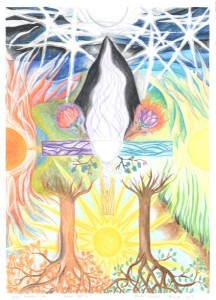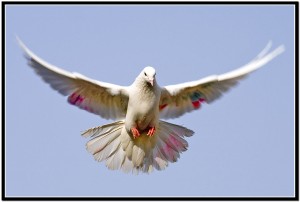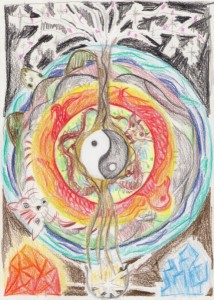 I’ve been back in the UK now for a few days, enjoying the particular ambience of the English summer time, all the birds in the garden are looking extremely plump and well fed, the flowers are all in bloom and the dragon flies are flying around the pond, showing off their beautiful green and red colourings.
I’ve been back in the UK now for a few days, enjoying the particular ambience of the English summer time, all the birds in the garden are looking extremely plump and well fed, the flowers are all in bloom and the dragon flies are flying around the pond, showing off their beautiful green and red colourings.
One of the major “diagrams” or maps of the spiritual path as explained in the western tradition is the Wheel of Life, which essentially consists of a circle with four points on it. These four points correspond to the following basic energies and directions:
North: Winter, night time and the earth element
East: Spring, morning and the air element
South: Summer, noonday and the fire element
West: Autumn, evening and the water element.
In addition the four seasons on the wheel spring, summer, autumn and winter also correspond to the four stages of a human (or any other creature’s) life, namely childhood, youth (young adult), mature adult (parental) and old age. From this we can start to see that our own life moves in a natural cycle that is very much like the four seasons of the year, and also the four stages of a twenty four hour cycle; morning (childhood), noon (young adult), afternoon (maturity) and night (old age).
In the picture that I have posted with this article you can see these correspondences depicted in an artwork that I have created:
- A pathway in the north (top of picture) leads to a winter landscape
- To the right hand side is a pathway opening to a spring landscape
- At the bottom is a gateway opening to a summer landscape
- On the left hand side there is a pathway leading to an autumn landscape.
Meditation on breathing with the four seasons and stages of life
From the above we can see that our life, like the nature of which we are a part moves in cycles. We can begin to develop a subjective feel for this by meditating in the following manner:
- As you begin to inhale feel the awakening of new life in your body-mind, like the energy of spring and childhood within you.
- As you progress through the second half of the inhalation, feel the awakening of the energy of summer and the prime of your youthful-self awakening within you.
- As you pause briefly at the top of your breath feel your body-mind to be full of vital energy and life-force, like a landscape in mid-summer.
- As you begin exhaling feel yourself connecting to the energy of autumn and maturity.
- As you move into the second half of your exhalation, feel yourself connecting to the season of winter, and to the wisdom of old age.
- As your breath ceases at the bottom of your exhalation, meditate briefly on death, and the end of the brief life cycle of your last breath. Note how it is from this ‘death’ that a cycle of new life emerges with the beginning of the next new breath.
- Continue this cycle of breathing for as many breaths as feels comfortable, and end with a period of silence, stillness and deep calm.
This is a nice meditation to do outdoors in direct contact with nature and the seasons themselves. Also, contemplation of the ‘Four Seasons’ artwork that I have done can also be a helpful tool for getting a feel for how the four seasons and stages of our life flow together in a circle, one after the other, and how we can create this cycle of energy within ourselves with each in-breath and out-breath.
© Toby Ouvry 2011, you are welcome to use or share this article, but please cite Toby as the source and include reference to his website www.tobyouvry.com







